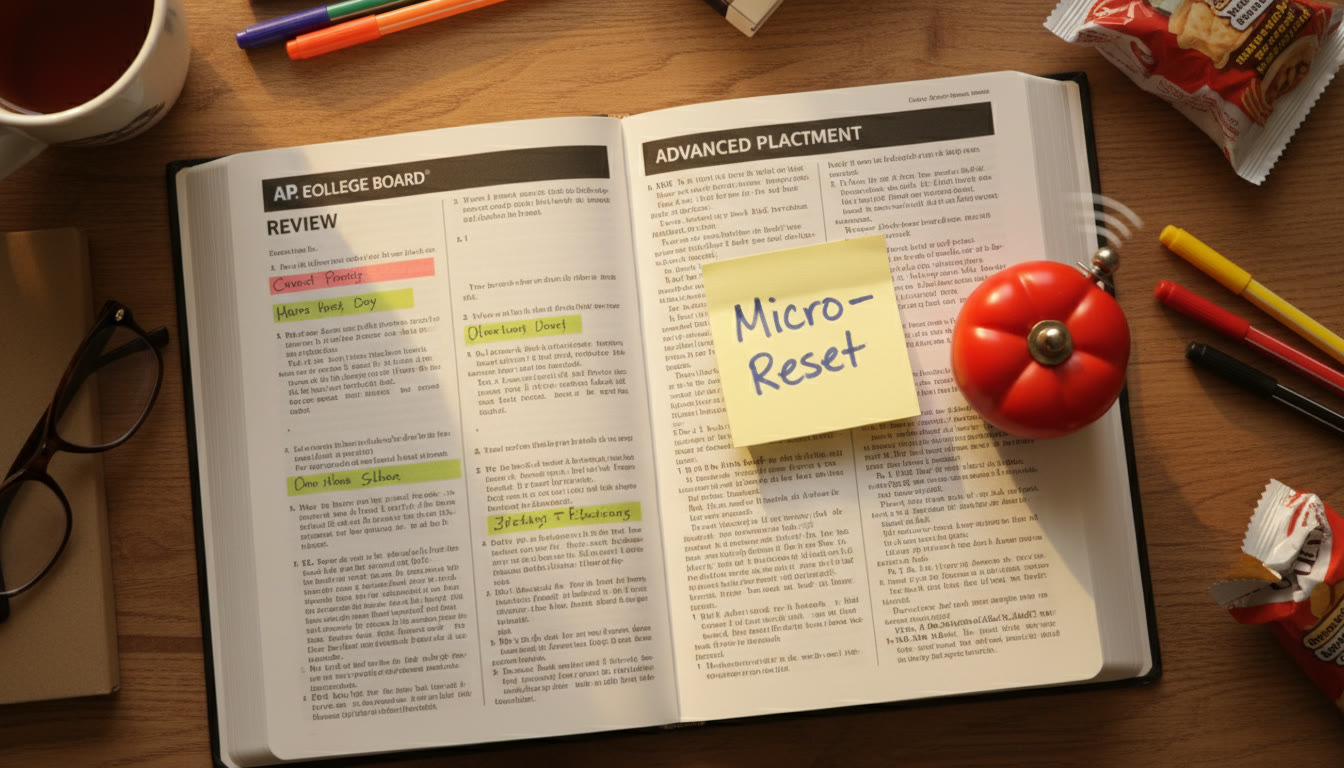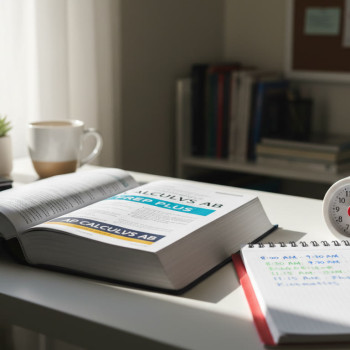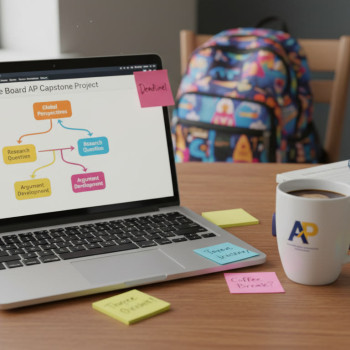Micro‑Meditations Between Sets: Why Five Seconds Can Change Your Study Session
If you’re deep into AP prep—pounding through practice sections, reviewing vocab, or timing essays—there’s a secret that doesn’t require extra hours: the power of a tiny pause. Micro‑meditations are short, intentional resets you take between study sets (or practice exams) to clear mental clutter, lower stress, and prime your brain for the next burst of work. They’re perfect for AP students who need high performance without losing momentum.
What Are Micro‑Meditations?
Micro‑meditations are very brief mindfulness or centering practices—often 5–90 seconds—that you do between tasks. Unlike a 20‑minute guided meditation, a micro‑meditation is designed to be fast, repeatable, and practical. Think of them as mental transitions: the same way athletes breathe and refocus between reps, you can bring intention and calm to the gaps between study sets.
Why They Work for AP Students
AP prep is a marathon of focused effort: memorization, reasoning, timed practice, and synthesis. Without deliberate breaks, attention degrades and anxiety climbs. Micro‑meditations offer three key benefits:
- Reset attention: A short focused breath or body scan reorients your brain, which helps sustain concentration across multiple study intervals.
- Reduce test anxiety: Brief calming practices interrupt worry loops and give you back a sense of control before the next timed section.
- Improve memory encoding: Transitioning cleanly between topics helps the brain separate and store information more effectively—so review sessions and practice sets stick better.

When to Use Micro‑Meditations During AP Prep
Micro‑meditations are most useful at clear breakpoints in your study flow. Here are practical spots to add them into your day:
- After finishing a timed practice set (e.g., a 15‑minute FRQ set or a 45‑minute multiple‑choice block).
- Between subject blocks—switching from AP Biology to AP US History, for example.
- Before starting an intensive review of formulas, diagrams, or essays.
- During transitions—right after school, before a study session begins, or just before bed to consolidate the day’s learning.
Sample Timing Patterns
Build micro‑meditations into established study methods like Pomodoro or “set and review” systems. Examples:
- Pomodoro style: 25 minutes study, 5 minutes break. Add a 10–20 second micro‑meditation at the very start and end of each Pomodoro.
- Set‑based: Complete one practice set (e.g., 10 FRQs). Take a 30‑second micro‑meditation, then a 2–3 minute stretch, then move on.
- Before exams: Just after finishing a full practice test, do a 90‑second grounding exercise to offload stress and review what you learned verbally.
Practical Micro‑Meditation Techniques
Below are simple, field‑tested techniques you can do without special equipment. Each one is tailored to fit into short breaks and to address a specific issue—focus, anxiety, memory, or energy.
1) The Three‑Breath Anchor (10–30 seconds)
Purpose: Immediate focus and calm. How: Close your eyes or soften your gaze. Inhale slowly for 4 counts, hold for 1, exhale for 6. Repeat three times. Notice how the chest and belly move—return your attention to the breathing if your mind wanders. This is ideal right after finishing a timed section.
2) Fingertip Grounding (5–20 seconds)
Purpose: Bring attention back to the present (great for test anxiety). How: Touch each fingertip to your thumb, one at a time, and name out loud one word that describes the task you just completed (e.g., “Formulas”, “Passages”, “Thesis”). The tactile sensation pairs with verbal labeling to reduce rumination.
3) Mini Body Scan (30–60 seconds)
Purpose: Release physical tension accumulated during studying. How: Sit upright, take two slow breaths, then scan quickly from head to shoulders to chest to hands to legs. On each area, consciously release tension as you exhale. Finish with one deep, energizing inhale.
4) Memory Cue Visualization (30–60 seconds)
Purpose: Strengthen recall between study chunks. How: Close your eyes. Picture one vivid cue tied to what you just studied—a striking image for a historical event, a diagram detail for biology, or a keyword for a calculus method. Hold it for a few breaths, then open your eyes and write the cue down on the corner of your study sheet.
5) Micro‑Movement Reset (15–45 seconds)
Purpose: Reenergize after long sitting. How: Stand, reach arms overhead, roll shoulders, and do two slow squats or calf raises. Movements stimulate blood flow and alertness without taking you out of study mode.
How to Build a Micro‑Meditation Routine That Sticks
Make micro‑meditation automatic by attaching it to a cue and keeping it tiny at first.
- Anchor the habit: Decide that after every practice set you will do one specific micro‑meditation. The end of the set is your cue.
- Keep it brief: Start with 10–20 seconds. Micro‑habits are easier to repeat and less prone to resistance.
- Log the practice: Keep a one‑line tracker—date, exercise, and 1‑word mood note. This creates momentum and allows later reflection.
- Iterate: If one technique doesn’t feel right, try another. Personal preference matters; choose what soothes and sharpens you.
Example Weekly Micro‑Meditation Plan
Try rotating techniques so your toolbox grows and you don’t hit a rut.
| Day | Study Blocks | Micro‑Meditation Between Sets | Goal |
|---|---|---|---|
| Monday | 3 × 25‑minute blocks (AP Calculus) | Three‑Breath Anchor | Clarity on problem approach |
| Tuesday | 2 × 45‑minute blocks (AP US History) | Fingertip Grounding | Reduce timeline overwhelm |
| Wednesday | 4 × 20‑minute blocks (AP Chemistry) | Mini Body Scan | Tension release, steady hands |
| Thursday | 3 × 30‑minute blocks (AP Language) | Memory Cue Visualization | Improve essay recall and examples |
| Friday | 1 × Full Practice Test | 90‑second grounding + review note | Process performance, plan follow‑up |
Putting Micro‑Meditations Into Real‑World AP Study Sessions
Let’s walk through two realistic scenarios so you can see how quick pauses fit into actual study work.
Scenario 1: Saturday Morning — Practice Exam Portions
You’re doing a timed AP Biology multiple‑choice block (1 hour). When the timer stops, you resist the urge to immediately jump to your phone or notes. Instead, you close your eyes for 20 seconds and do the Three‑Breath Anchor. You then jot one line about what went well and one thing to target next time. That small break prevents obsessive replay of missed items and makes your review session more precise.
Scenario 2: Weeknight Mixed Review
After school you have two 30‑minute blocks—AP US History then AP Statistics. You place a fingertip grounding practice between them: you touch each fingertip to your thumb and say one keyword (e.g., “Reconstruction,” “Regression”). That mini ritual helps you close the mental file on history and open the statistics file, improving retrieval in both areas.
Measuring Impact: How to Know It’s Working
Micro‑meditations are subtle. To evaluate whether they help, track both objective and subjective markers.
- Objective: Note changes in practice score consistency, fewer careless mistakes, or improved timed‑section completion rates.
- Subjective: Record your perceived focus and stress levels before and after sessions (use a 1–5 scale). Over weeks, you should see lower baseline anxiety and a higher sense of control.
- Behavioral: Are you returning to study faster after breaks? Do you feel less tempted to procrastinate? These are strong signs the micro‑meditations are helping.
Common Misconceptions and How to Avoid Them
Because micro‑meditations are small, some students dismiss them as ineffective. Others overdo them and lose study momentum. Here’s how to navigate misconceptions:
- “I don’t have time”: Spend ten seconds. Ten seconds is not a time loss; it’s an investment in quality focus that pays off across an hour of study.
- “I can’t meditate”: This isn’t about deep spirituality. It’s practical skill—breath, movement, or labeling—tailored to performance.
- “It doesn’t feel ‘deep’”: That’s expected. Micro‑meditations are shallow by design. If you want deeper practice, schedule a longer session outside core study time.
Tools and Small Supports That Help
You don’t need special apps, but a few small supports make consistency easier.
- Use a simple timer that marks the end of a study set and reminds you to do a 10–30 second practice.
- Keep a sticky note or a tiny notebook labeled “Micro‑Reset” next to your workspace for one‑line reflections.
- Try mixing a digital cue (phone alarm on Do Not Disturb) with a physical cue (placing a small object—like a paperclip—on your desk that you touch between sets).
How Personalized Tutoring Amplifies Micro‑Meditations
Micro‑meditations are highly personal—what calms one person may distract another. That’s where personalized tutoring becomes valuable. With Sparkl’s personalized tutoring, students can get tailored study plans that integrate short mindfulness resets into their pacing, plus 1‑on‑1 guidance on which micro‑meditation techniques suit their temperament and test needs. Expert tutors can help you monitor how these resets change performance and adjust the plan—pairing cognitive strategies with short mindfulness for measurable gains.
Examples: Quick Scripts You Can Use
Here are short phrases and scripts to pair with each technique. Keep them visible and repeat them before you begin each micro‑meditation to install the habit.
- Three‑Breath Anchor: “In. Pause. Out. Ready.”
- Fingertip Grounding: “One word, one touch. Done.”
- Mini Body Scan: “Relax shoulders. Unclench jaw. Let go.”
- Memory Cue Visualization: “Picture one image. Hold it. Pencil it down.”
- Micro‑Movement Reset: “Stand. Stretch. Reset.”
Sample 60‑Minute Study Session Using Micro‑Meditations
This session balances focus, practice, and micro‑resets for maximal retention.
- 0–10 minutes: Warmup review (flashcards). End with a 10‑second Three‑Breath Anchor.
- 10–35 minutes: Practice problems (timed). End with a 20‑second Mini Body Scan and record one takeaway.
- 35–40 minutes: Micro‑movement reset and water break.
- 40–55 minutes: Targeted review of errors. End with a 30‑second Memory Cue Visualization.
- 55–60 minutes: One line reflection in your “Micro‑Reset” log and plan for next study block.
Tips for Test Day and the AP Exam Itself
Micro‑meditations are portable and exam‑friendly. On test day, use them in the moments allowed—before the exam starts, while reading directions, or during the short timeout between sections if permitted by the proctor. A single, controlled breath or a fingertip grounding sequence can lower your heart rate and bring clarity to complex question passages.
Do’s and Don’ts for the Exam Room
- Do keep micro‑meditations silent and discreet: breath practice or fingertip grounding is unobtrusive.
- Don’t do long or distracting movements that might disturb other test takers.
- Do have a pre‑exam ritual (one specific micro‑meditation) you practice consistently so it feels natural on the day.
Common Student Questions
Q: Will micro‑meditations actually improve my AP score?
A: They’re not a magic pill, but they improve the quality of your preparation. By reducing anxiety, limiting careless errors, and improving focus, micro‑meditations make study time more efficient and practice sessions more representative of exam conditions—so your scores are likely to reflect those improvements over time.
Q: How soon will I notice benefits?
A: Many students notice immediate subjective benefits—calmer focus and fewer distractions—after just a few sessions. Objective changes in practice consistency and scores typically emerge over 2–4 weeks of regular use.
Q: I’m skeptical—what’s one tiny experiment I can run?
A: Try this four‑day test: on two days, do 25 minutes study blocks without micro‑meditations; on two days, add a 15‑second reset between blocks. Compare your perceived focus, number of interruptions, and features like mistakes or time pressure. The contrast is often revealing.
Final Thoughts: Make Short Pauses Part of Your Exam Strategy
AP prep is about deliberate practice, not frantic effort. Micro‑meditations slot into your study routine with minimal cost and measurable upside. They help you convert time into learning more efficiently by protecting attention, lowering stress, and improving the quality of your reviews. Start tiny, anchor the habit to the end of each set, and iterate with what fits your personality and subjects.
And when you want support tailoring these tiny resets to your study rhythm, consider working with Sparkl’s personalized tutoring—1‑on‑1 guidance, tailored study plans, expert tutors, and AI‑driven insights can help integrate micro‑meditations into a precise routine that fits your AP goals. Little pauses, when done right, compound into better focus, clearer recall, and, ultimately, stronger performance on test day.

Ready To Try It?
Pick one micro‑meditation and commit to using it after every study set for one week. Keep a one‑line journal entry after each session. After seven days, review your notes: do you feel calmer? Are practice sessions clearer? That small experiment could be the easiest, most effective upgrade you make this semester.
Parting Reminder
AP exams reward consistent, focused practice. Micro‑meditations don’t replace study—they supercharge it. In the quiet seconds between sets lies an opportunity: a reset that helps you meet the next question—and the exam day—with steadiness and clarity. Breathe, reset, and return with purpose.
























No Comments
Leave a comment Cancel